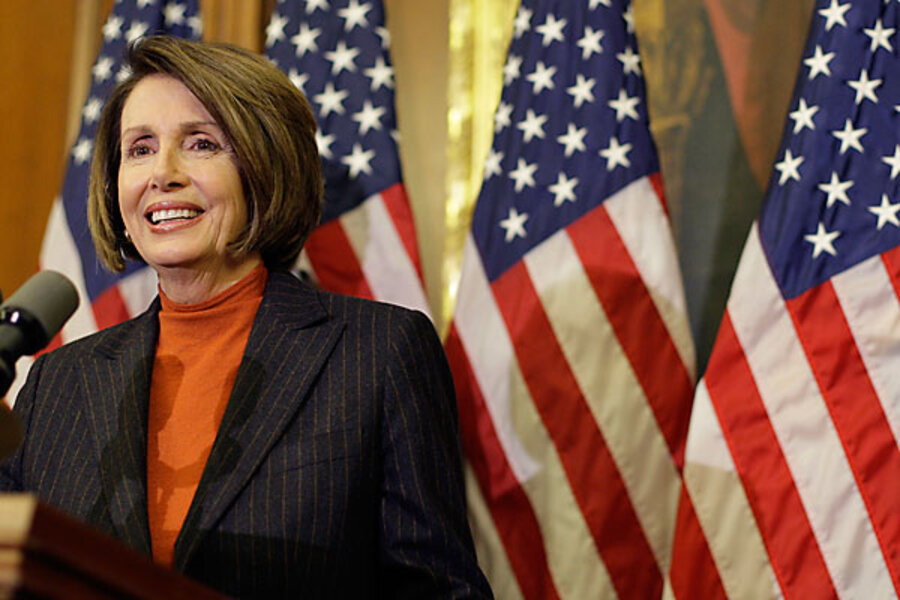Second stimulus? US House passes $154 billion jobs bill.
Loading...
With America's unemployment rate in double digits, the US House on Wednesday narrowly passed a $154 billion jobs bill. The vote was 217 to 212.
The package is not expected to be taken up by the Senate until early next year. But if the legislation is ultimately passed into law, it may produce funding for worker training in high-growth or emerging industries. It could also provide money for municipalities to hire more police and firefighters, and it could create a host of other programs designed to put Americans back to work.
Billions would probably go toward highway construction and mass transit. The House legislation calls for $500 million for airport construction and $800 million for Amtrak.
"It will create jobs and help lower the unemployment rate to be less than it would have been without the spending," says Phineas Baxandall, a senior analyst for tax and budget policy at the US Public Interest Research Group (US PIRG) in Boston.
The total spending in the bill could amount to almost 1 percent of US gross domestic product. However, the total is considerably less than the $780 billion stimulus bill passed earlier this year.
A spokesman for House Speaker Nancy Pelosi said he was not aware of how many jobs the legislation would create. Lawmakers received bad publicity after the first stimulus package did not produce the number of jobs that it promised. President Obama said the prior legislation would save or create 4 million jobs over two years.
"We didn't get a lot of bang for the buck out of that package," says David Wyss, chief economist at Standard & Poor's in New York. "I'm not sure this is any better."
Lowering the unemployment rate could be a hard slog. On Wednesday, in testimony before the Senate Democratic Policy Committee, Martin Neil Baily, a senior fellow at the Brookings Institution, warned that even if the economy adds 200,000 jobs a month, it will take seven years to lower the unemployment rate to 5 percent.
As the new legislation was up for consideration in the House, some groups continued to argue over how to get the most jobs out of government funds. In an analysis of the first stimulus, Smart Growth America, the US PIRG, and the Center for Neighborhood Technology claimed that spending on public transportation produced twice as many jobs as that for highway construction.
"If the goal is to create jobs, invest in buses and rail rather than highways," Mr. Baxandall says. According to him, every $1 billion spent on public transportation creates 16,419 job months (jobs in a month) compared with 8,781 for highways.
Some mass-transit advocates argue that a big investment in rail could help employ out-of-work auto workers. "It takes the same skill set to build an 80-foot passenger rail car as it does to build an automobile," says John Robert Smith, president of Reconnecting America, which is based in Washington conducts research on transit-oriented development.
But the construction industry argues it needs to get workers out on "shovel ready" projects. The unemployment rate for the construction industry was 19.4 percent in November. States have identified 9,500 road, bridge, and transit projects that are "ready to go," according to the lobbying group AASHTO, which represents highway interests.
Prior to this year, government spending on job training had been going down. But the House version of the legislation reverses that trend, providing $1.25 billion is for training programs. This would supplement the $3 billion to $4 billion that was in the first stimulus package.
"It's important if we get a job creation bill we get people into new careers. And we have to have some capacity to make sure they have the skills to do the new jobs," says Kermit Kaleba, a senior policy analyst at the Workforce Alliance in Washington, which advocates training programs.
-----
Follow us on Twitter.





